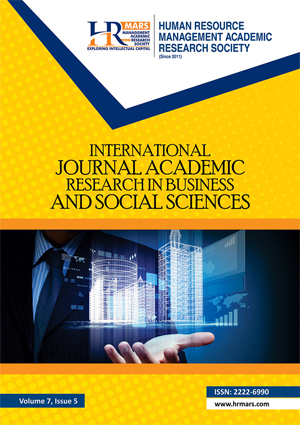Abdul Wahab, F. (2011). International nurse day message. Malaysia Nurses Association.
Allen, T. D., & Eby, L. T. (2007). The blackwell handbook of mentoring: A multiple perspectives approach (1st ed.).
Balang, R. V., Burton, R. L., & Barlow, N. (2017). Illuminating professionalis among nurses in their documentation within the Malaysia context - A qualitative study. International Journal of Business and Societ, 18(S4), 692–700. http://www.ijbs.unimas.my/images/repository/pdf/Vol18-s4-paper6.pdf
Barnett, T., Namasivayam, P., & Narudin, D. A. A. (2010). A critical review of the nursing shortage in Malaysia. International Nursing Review, 57(1), 32–39. https://doi.org/10.1111/j.1466-7657.2009.00784.x
Beach, J., & Oates, J. (2014). Maintaining best practice in record-keeping and documentation. Nursing Standard, 28(36), 45–50. https://doi.org/10.7748/ns2014.05.28.36.45.e8835
Beecroft, P. C., Santner, S., Lacy, M. L., Kunzman, L., & Dorey, F. (2006). New graduate nurses’ perceptions of mentoring: Six-year programme evaluation. Journal of Advanced Nursing, 55(6), 736–747. https://doi.org/10.1111/j.1365-2648.2006.03964.x
Birks, M. J., Francis, K. L., Chapman, Y. B., & Abdullah, B. (2008). From traditional healers to telemedicine: A history of nursing in Malaysia. Singapore Nursing Journal, 35(2), 14–25.
Bowlby, J. (1979). The making and breaking of affectional bonds. Tavistock.
Bowlby, J. (2008). Attachment (2nd ed.). Basic Books.
Buncuan, J., & Zabidah, P. (2010). Professional nursing in Malaysia. Journal of Malaysian Nurses Association, 5(1). https://www.researchgate.net/publication/286099433_Professional_nursing_in_Malaysia
Casey, D. C., & Clark, L. (2011). Roles and responsibilities of the student nurse mentor: an update. British Journal of Nursing, 20(15), 933–937. https://doi.org/10.12968/bjon.2011.20.15.933
Clutterbuck, D. (2004). Everyone needs a mentor: Fostering talent in your organisation (4th ed.). Chatered Institute of Personnel and Development.
Cribb, A., & Gewirtz, S. (2015). Professionalism. Polity Press.
Cruez, F. A. (2006). When Florence nightingales come a knocking. New Sunday Times.
Deparment of Health. (2010). Essence of care 2010. https://assets.publishing.service.gov.uk/government/uploads/system/uploads/attachment_data/file/216695/dh_119973.pdf
Edwards, M. (2008). Evidence-based practice. In A. Bryan, E. Manson-Whithead, & A. McIntosh (Eds.), Key concepts in nursing. Sage UK.
Enrico, N. B., & Chapman, Y. (2011). The lived experiences of mentoring nurses in Malaysia. Journal of Nursing, 1(1), 87–104.
Gardner, G., Gardner, A., & Proctor, M. (2004). Nurse practitioner education: a research-based curriculum structure. Journal of Advanced Nursing, 47(2), 143–152. https://doi.org/10.1111/j.1365-2648.2004.03073.x
Gopee, N. (2011). Mentoring an supervision in healthcare (2nd ed.). SAGE Publication.
Finkelstein, L. M., Allen, T. D., & Rhoton, L. A. (2003). An examination of the role of age in
mentoring relationships. Group & Organization Management, 28(2), 249-281.
Hisar, F., & Karada?, A. (2010). Determining the professional behaviour of nurse executives. International Journal of Nursing Practice, 16(4), 335–341. https://doi.org/10.1111/j.1440-172X.2010.01849.x
Jones, M. K., Nettlon, P., Smith, L., Brown, J. C., Chapman, T. B., & Morgan, J. E. (2005). The mentoring chameleon- A critical analysis of mentors’ and mentees’ perceptions of the mentoring role in professional education and training programmes for teachers, nurses, midvises and doctors. British Educational Research Association Annual Conference.
Kanchanachitra, C., Lindelow, M., Johnston, T., Hanvoravongchai, P., Lorenzo, F. M., Huong, N. L., Wilopo, S. A., & dela Rosa, J. F. (2011). Human resources for health in southeast Asia: shortages, distributional challenges, and international trade in health services. The Lancet, 377(9767), 769–781. https://doi.org/10.1016/S0140-6736(10)62035-1
Keepnews, D. M., Brewer, C. S., Kovner, C. T., & Shin, J. H. (2010). Generational differences among newly licensed registered nurses. Nursing Outlook, 58(3), 155–163. https://doi.org/10.1016/j.outlook.2009.11.001
Kram, K. E. (1985). Mentoring at work: Developmental relationships in organizational life. Scott Foresman.
McKenna, L., & Newton, J. M. (2008). After the graduate year: A phenomenological exploration of how new nurses develop their knowledge and skill over the first 18 months following graduation. Australian Journal of Advanced Nursing, 25(4), 9.
Merican, I. (2006). Nursing improvements on the way. New Straits Times. http://search.proquest.com.libaccess.hud.ac.uk/printviewfile?accountid=11526 Ministry of Health Malaysia (2007). Annual Report 2007. Ministry of Health Malaysia
Miles, K. (2011). Using attachment theory in mentoring. Nursing Times, 107(38), 23–25. https://www.nursingtimes.net/roles/nurse-educators/using-attachment-theory-in-mentoring-23-09-2011/
Ministry of Heath. (2008). Malaysia Health 2008. https://www.moh.gov.my/moh/images/gallery/publications/mh/Malaysia%20Health%202008-2.pdf
Ministry of Higher Education Malaysia. (2010). Nursing education in Malaysia. University Publication Centre.
Nikolaidou, ?., Kounti, F., & Tsolaki, ?. (2014). Emotional Reactions towards Dementia: The Right to Life. International Journal of Academic Research in Psychology, 1(2), 58–75.
NHS Confederation. (2016). NHS statistics, facts and figures. NHS Confederation. https://www.nhsconfed.org/resources/key-statistics-on-the-nhs
Norhasni, Z. A., & Aminuddin, H. (2011). A review of effective mentoring practices for mentees development. Journal of Studies in Education, 2(1). https://doi.org/10.5296/jse.v2i1.1226
Norton, P., & Hathaway, D. (2008). Exploring two teacher education online learning designs: A classroom of one or many? Journal of Research on Technology in Education, 40(4), 475-495. http://dx.doi.org/10.1080/15391523.2008.10782517
Pellico, L. H., Brewer, C. S., & Kovner, C. T. (2009). What newly licensed registered nurses have to say about their first experiences. Nursing Outlook, 57(4), 194–203. https://doi.org/10.1016/j.outlook.2008.09.008
Quinn, F. M. (2000). The principles and practice of nurse education. Nelson Thornes.
Robinson, T. (2001). Mentoring speeds the learning curve. Information Week, 832(9), 77–78.
Scandura, T. A., & Pellegrini, E. K. (2007). Workplace mentoring: Theoretical approaches and methodological issues. In T. D. Allen & L. T. Eby (Eds.), Handbook of mentoring: A multiple perspective approach. Blackwell.
Shamsudin, N. (2006). Better late than never. Journal of Advanced Nursing, 53(3), 262–263. https://doi.org/10.1111/j.1365-2648.2006.03655.x
Sherman, R. (2006). Leading A Multigeneration Nursing Workforce: Issues, challenges and strategies. OJIN: The Online Journal Of Issues In Nursing.
Wagner, A. L., & Seymour, M. E. (2007). A model of caring mentorship for nursing. Journal for Nurses in Staff Development, 23(5), 201–211. https://doi.org/10.1097/01.NND.0000294926.14296.49
Wangensteen, S., Johansson, I., & Nordstrom, G. (2008). The first year as a graduate nurse – an experience of growth and development. Journal of Clinical Nursing, 17(14), 1877–1885. https://doi.org/10.1111/j.1365-2702.2007.02229.x
World Health organization. (2012). World health statistics 2012. https://www.who.int/gho/publications/world_health_statistics/2012/en/
World Health Organization. (2017). Report of the policy dialogue meeting on the nursing workforce. https://www.who.int/hrh/news/2017/NursingApril2017-2.pdf?ua=1
Yukl, G. (1989). Leadership in organizations. Prentice Hall.
Zakari, N. M., Al Khamis, N. I., & Hamadi, H. Y. (2010) Conflict and professionalism: perceptions among nurses in Saudi Arabia. International Nursing Review. 57, pp. 297–304.
In-Text Citation: (Fong et al., 2021)
To Cite this Article: Fong, T. S., Hassan, Z., Kasa, M., Balang, R. V., & Abdullah, S. M. (2021). Exploring Mentoring Skills to Assist New Nurses: Mentors’ and Mentees’ Perspectives. International Journal of Academic Research in Business and Social Sciences, 11(14), 124–141.
